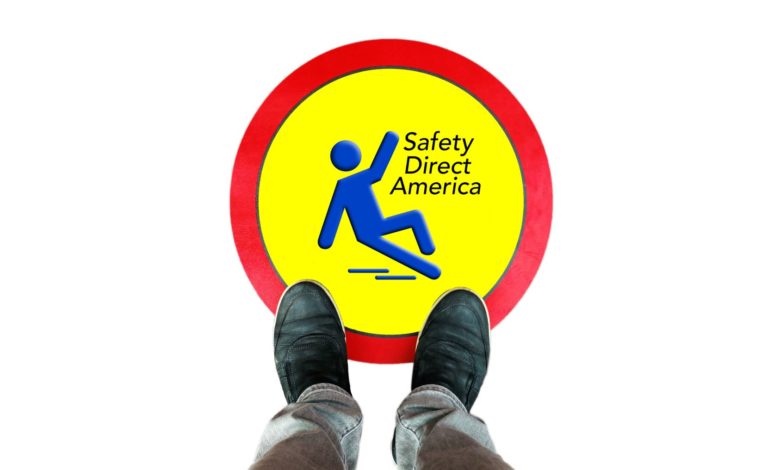
In this blog article, courtesy of Drytac, George Sotter from Safety Direct America provides insight into various slip-ratings and how to choose the correct slip rated media for safe floor graphics.
When choosing floor graphics materials, they must be suitable and safe for their intended environment. Products must adhere well to the floor surface for the project’s desired duration without curling at the edges and have a non-slip surface to prevent accidents. In the USA, UL 410 is the most commonly used certification for floor graphics products, but some other tests and ratings are more suitable for modern use.
UL 410
The UL 410 standard rates various materials and surfaces as slip-resistant. They are tested for their static coefficient of friction (COF), which is the measure of how slippery a floor is when someone is standing still on it. Therefore, this figure is irrelevant for any occasion when a pedestrian is walking across it, which is naturally when slip resistance is most important.
The laboratory-only test method for UL 410 is also somewhat out of date. It was devised roughly 80 years ago to test the floor waxes, which are no longer used, having since been replaced by plastic coatings or floor finishes. It is also seldom used to evaluate hard floorings like ceramic tile or natural stone. Unfortunately, it has often been applied in this way, indicating that the floor complies with a safety standard when, in fact, it does not.
Should litigation occur requiring a test of a floor graphic, it would be impractical to use UL 410 because it requires a separate test piece that can be put in a laboratory machine. Passing UL 410, therefore, might not help the property operator. Perhaps more importantly, relying on a UL 410 rating to assure users of slip resistance could pose an inadvertent injury risk.
ANSI A137.1/A326.3
ANSI ratings are an alternative to UL 410 and are increasingly used by floor graphics media manufacturers. The ANSI specifies a minimum dynamic COF, wet or dry, of 0.42 for safety. The test uses a hard rubber slider to simulate the heel of a dress shoe. However, in addition to meeting this threshold, the user must consider six other factors:
- Type of use
- Traffic
- Expected contaminants
- Expected maintenance
- Expected wear
- Manufacturers’ guidelines and recommendations
ASTM E303
The ASTM E303 test uses the pendulum skid tester and a soft rubber slider that simulates soft-soled footwear such as athletic shoes and boat shoes as well as bare feet. Normally in the pendulum test, a standard hard rubber slider simulates the bottoms of dress shoes, including high heels.
This test has been in use since 1971 and is now a national standard in at least 50 nations. Also, it has safety standards for many different situations that have been in use since being established in 1999. These standards happen to be in the UK (BS 7976) and Europe (EN 13036), but they apply equally well in other countries.



